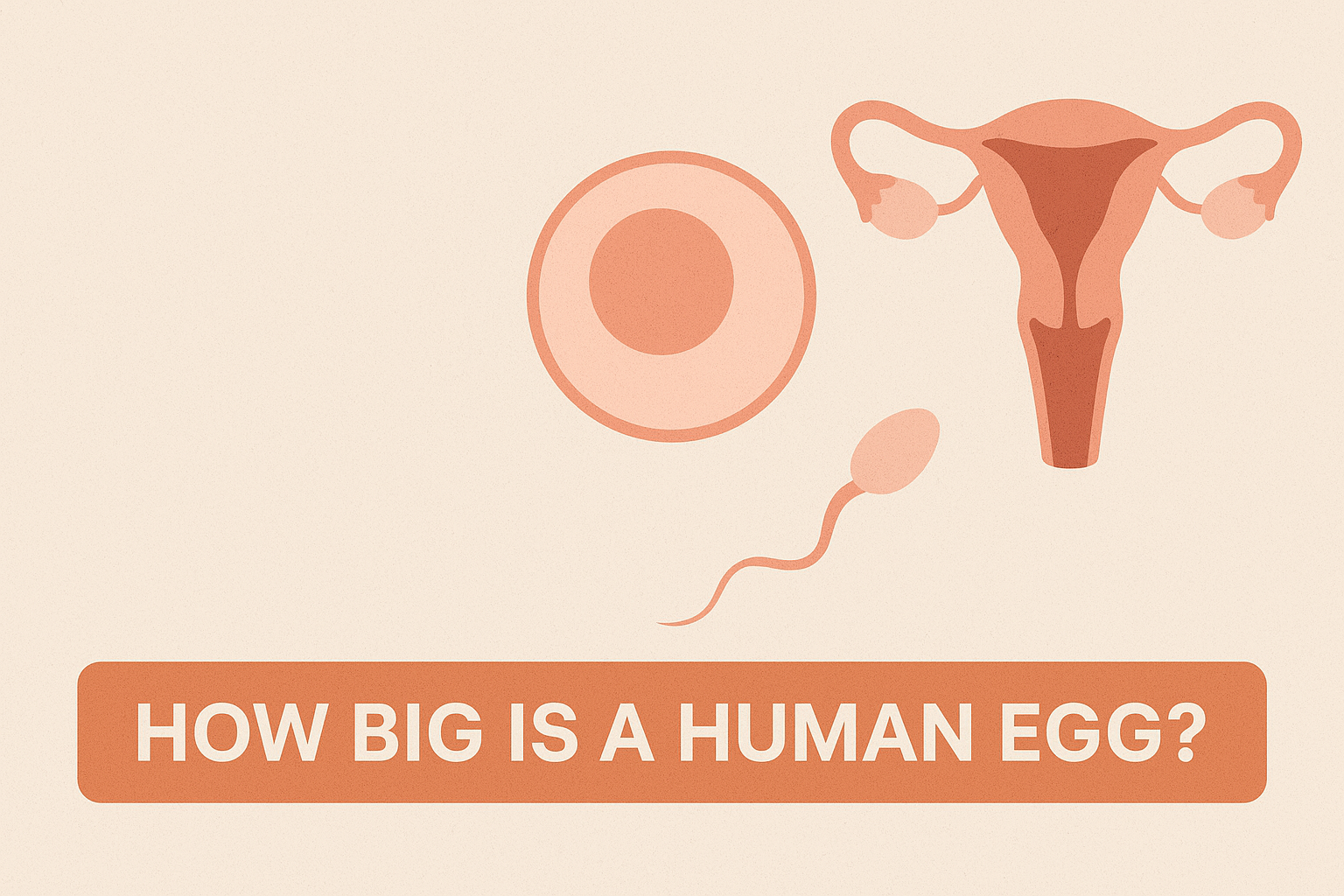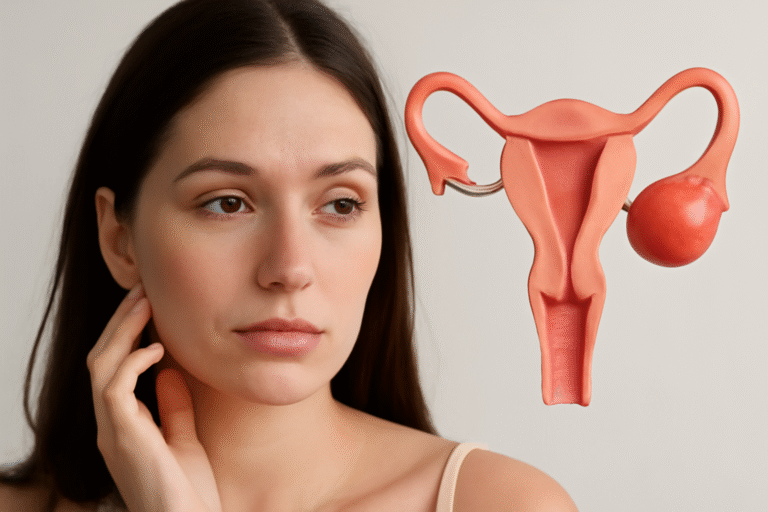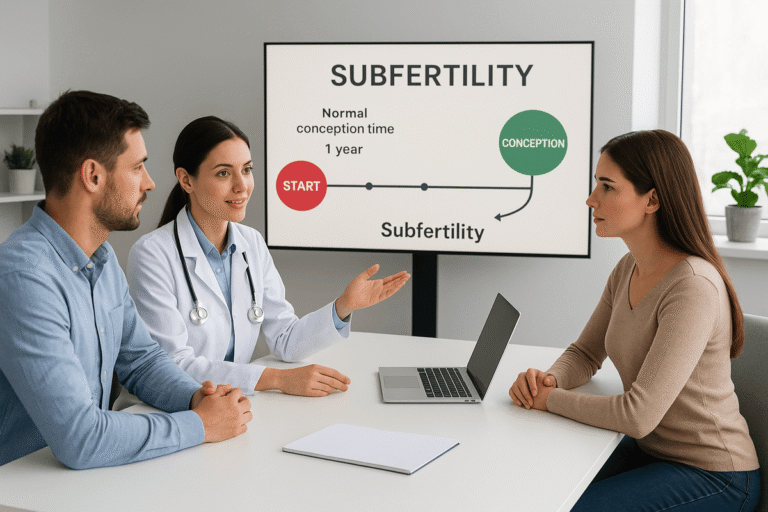It’s almost funny if you think about it—most of us know more about chicken eggs in the fridge than the microscopic egg cells inside our own bodies. We crack shells, whip yolks, and talk about “sunny-side up,” but when it comes to the cells that hold half the recipe for human life, we’re strangely in the dark.
Egg cells, also called oocytes, are among the most mysterious and fascinating parts of human biology. They’re tiny, fleeting, and yet unbelievably powerful. Every person alive today began with one. And yet, ask the average person “how big is a human egg?” or “how long does an egg survive?” and you’ll probably get blank stares.
So let’s change that. Below, we’ll walk through five remarkable facts about egg cells—from their size, to their lifespan, to why freezing them works. These are the kinds of details that can make you stop mid-read and think, Wow, I had no idea.
Also read: How Do Irregular Periods Affect Ovulation and Conception?
Fact #1: The human egg is one of the largest cells in the body
Size isn’t everything, but in the case of egg cells, it’s a big deal—literally. The human egg is the largest cell in the body. At about 100 microns (that’s 0.1 millimeters), it’s actually visible to the naked eye if you know where to look. Compare that to a skin cell, which is roughly 25 microns, or a sperm cell, which is only about 5 microns wide. In other words, an egg is not just a little larger—it’s dozens of times bigger.
Why so much space? Because the egg is like a fully stocked warehouse. It contains nutrients, proteins, mitochondria (the “powerhouses” of the cell), and all the machinery needed to support the earliest stages of life. Sperm cells, by comparison, are stripped down for speed: just a packet of DNA with a tail.
I find that contrast fascinating. The sperm gets all the attention for its “race to the egg,” but once it arrives, it’s clear who’s really running the show. The egg is vast, complex, and perfectly equipped to decide the next step.
Fact #2: Human eggs are packed with instructions, not food
When you picture an “egg,” it’s easy to think of bird eggs—yolk, shell, white. Those eggs are giant lunchboxes, filled with nutrients to feed an embryo until it can survive on its own. Mammalian eggs, including human ones, are different. They don’t need to provide months of food, because embryos develop in a uterus with a placenta supplying nutrients.
So what’s inside a human egg? Mostly instructions.
Egg cells are loaded with RNA, the molecules that act like messengers, carrying directions from DNA and telling the cell what to do. After fertilization, RNA helps the egg fuse with sperm, guides those first few rounds of cell division, and even tells early embryonic cells which jobs to take on—muscle, nerve, skin, and so on.
Then there’s the mitochondria. Eggs hold tens of thousands of them, all ready to churn out energy. And here’s the kicker: every mitochondrion in your body today came from your mother’s egg. Not your father’s sperm. Just hers. That means the energy fueling you right now can be traced back to one egg cell decades ago.
Also read: when to start eating dates in pregnancy
Fact #3: An egg’s window of opportunity is incredibly short
With all this buildup, you’d think eggs would hang around for a while once released. But no—their moment in the spotlight is surprisingly brief.
Ovulation happens about two weeks after the first day of your period. The egg pops out of the ovary and is gently pulled into the fallopian tube by tiny, fingerlike projections. From there, it drifts toward the uterus. Its total lifespan outside the ovary? Just 12 to 24 hours. That’s all.
If sperm are waiting, fertilization can take place in that narrow window. If not, the egg breaks down and is eventually flushed out during menstruation, along with the uterine lining and other tissue.
What always strikes me about this is how fragile the timing is. Sperm can survive up to five days inside the female reproductive tract, but the egg lasts less than one. For conception to happen, those two timelines have to overlap almost perfectly. It makes every successful pregnancy feel a little like a miracle of timing.
Fact #4: You’re born with all the eggs you’ll ever have
Here’s one of the most remarkable truths: women don’t make new eggs throughout their life. Every single egg you’ll ever have was already present before you were born.
Eggs start forming while you’re still in your mother’s womb, around the ninth week of her pregnancy. At birth, you may have 1–2 million immature eggs. By puberty, that number shrinks to about 300,000. And over a lifetime, only about 400–500 will ever be released through ovulation. The rest quietly disintegrate.
That means the egg that created you was technically present inside your grandmother’s womb—when she was pregnant with your mother. Three generations, overlapping in one moment of biology.
But this also has consequences. Eggs age as you do. Over time, they’re more likely to contain errors in their DNA. That’s why the risk of infertility, miscarriage, or conditions like Down syndrome increases with maternal age. The eggs are older, and so is their genetic material.
It’s a sobering fact, but also one that helps explain why fertility specialists focus so much on age. The eggs you have are precious and finite.
Fact #5: Freezing eggs preserves their quality, not just their number
For many women, egg freezing feels like a safety net—and it’s one that actually works. Here’s why: when eggs are frozen, they don’t “age” in storage. Their quality stays exactly as it was on the day they were frozen.
That means a 40-year-old woman using eggs she froze at 30 has the same chance of pregnancy as she would have at 30. Studies confirm this: frozen and thawed eggs have similar success rates for fertilization, embryo development, and live births as fresh eggs.
Of course, freezing doesn’t guarantee a baby. Nothing in fertility does. But it levels the playing field, giving women more control over when they want to try for pregnancy. In a world where careers, relationships, and personal timing don’t always line up with biology, that’s powerful.
Also read: White Discharge Before Period vs Early Pregnancy
Why these facts matter
Learning about egg cells isn’t just academic trivia. It shifts the way we understand fertility, aging, and even our own origins.
- The size of the egg shows how much preparation goes into even the possibility of life.
- The instructions inside highlight the egg’s active role—not just carrying DNA, but directing the earliest steps of development.
- The short lifespan reveals how fragile the window of fertility really is.
- The fact that we’re born with all our eggs connects generations in a biological chain and explains why fertility changes with age.
- And the power of egg freezing offers a way to preserve that potential when the timing isn’t right.
Each fact tells part of a bigger story: eggs aren’t passive little orbs waiting for sperm. They’re decisive, resource-rich, and fleeting—an intricate balance of opportunity and limitation.
Final thought
Every single person alive today started as one of these cells. That’s not an exaggeration; it’s a fact. One egg, one day, one meeting with one sperm—that was the beginning of you, me, everyone.
Sometimes, when you look at biology too closely, it can feel mechanical: cells dividing, hormones firing, cycles repeating. But egg cells remind me that biology is also full of poetry. The largest cell in the body, visible yet fragile. Finite, yet powerful enough to carry generations forward.
Next time you hear someone talk casually about “the birds and the bees,” you’ll know a little more about what’s really happening. And maybe you’ll think of the egg not as a silent partner, but as the true star of the story.




